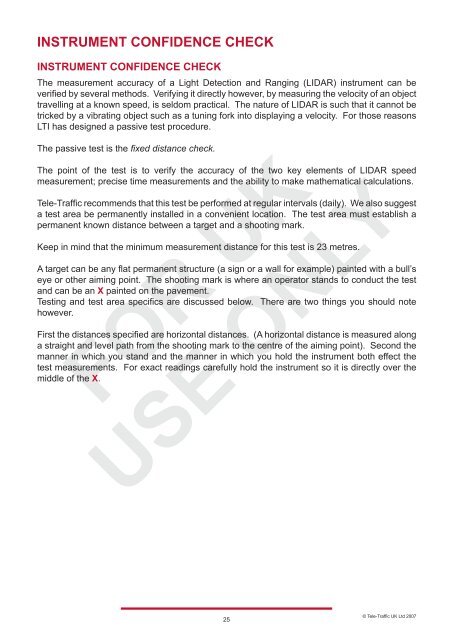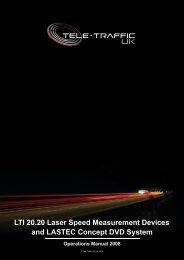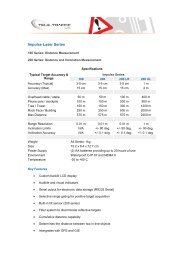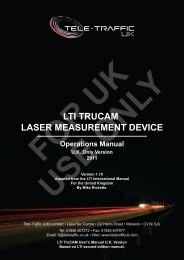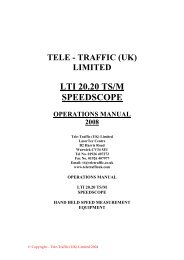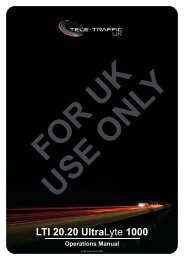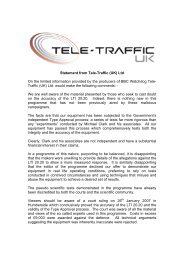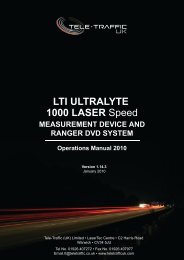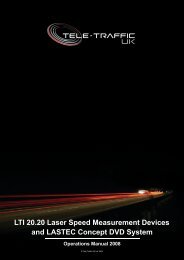LTI 20-20 UltraLyte 100 - Tele-Traffic
LTI 20-20 UltraLyte 100 - Tele-Traffic
LTI 20-20 UltraLyte 100 - Tele-Traffic
Create successful ePaper yourself
Turn your PDF publications into a flip-book with our unique Google optimized e-Paper software.
INSTRUMENT CONFIDENCE CHECK<br />
INSTRUMENT CONFIDENCE CHECK<br />
The measurement accuracy of a Light Detection and Ranging (LIDAR) instrument can be<br />
verified by several methods. Verifying it directly however, by measuring the velocity of an object<br />
travelling at a known speed, is seldom practical. The nature of LIDAR is such that it cannot be<br />
tricked by a vibrating object such as a tuning fork into displaying a velocity. For those reasons<br />
<strong>LTI</strong> has designed a passive test procedure.<br />
The passive test is the fixed distance check.<br />
The point of the test is to verify the accuracy of the two key elements of LIDAR speed<br />
measurement; precise time measurements and the ability to make mathematical calculations.<br />
<strong>Tele</strong>-<strong>Traffic</strong> recommends that this test be performed at regular intervals (daily). We also suggest<br />
a test area be permanently installed in a convenient location. The test area must establish a<br />
permanent known distance between a target and a shooting mark.<br />
Keep in mind that the minimum measurement distance for this test is 23 metres.<br />
A target can be any flat permanent structure (a sign or a wall for example) painted with a bull’s<br />
eye or other aiming point. The shooting mark is where an operator stands to conduct the test<br />
and can be an X painted on the pavement.<br />
Testing and test area specifics are discussed below. There are two things you should note<br />
however.<br />
First the distances specified are horizontal distances. (A horizontal distance is measured along<br />
a straight and level path from the shooting mark to the centre of the aiming point). Second the<br />
manner in which you stand and the manner in which you hold the instrument both effect the<br />
test measurements. For exact readings carefully hold the instrument so it is directly over the<br />
middle of the X.<br />
25<br />
© <strong>Tele</strong>-<strong>Traffic</strong> UK Ltd <strong>20</strong>07


